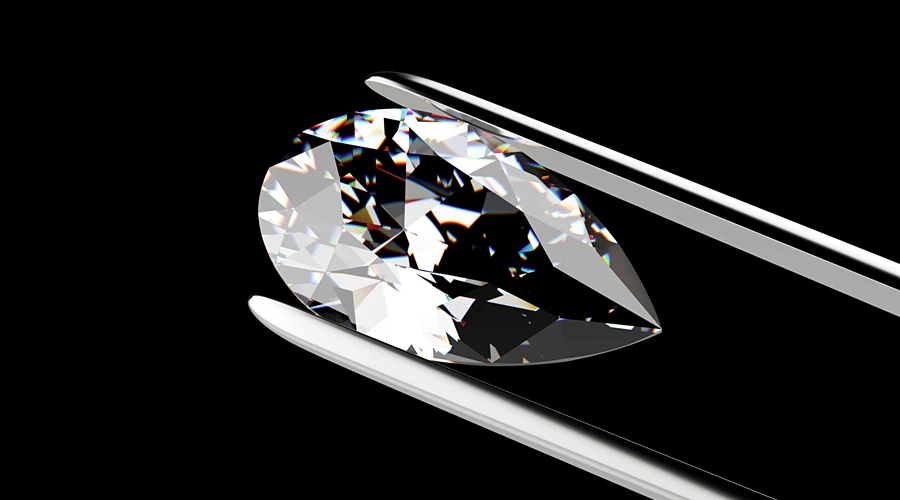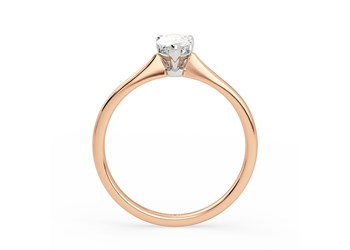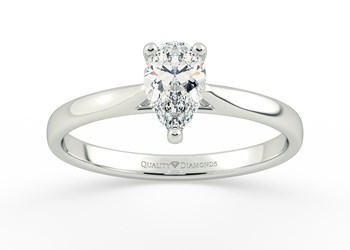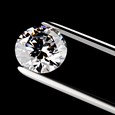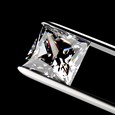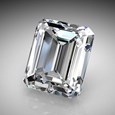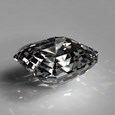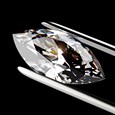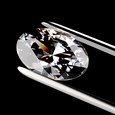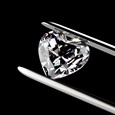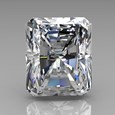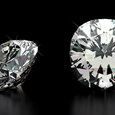Sign up for our Newsletter
Pear Cut Diamonds
A graceful sweeping curve tapers to a fine point.
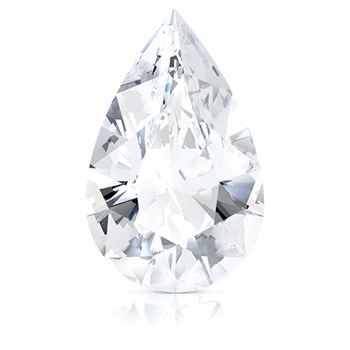
Pear Cut Diamond (Top View)
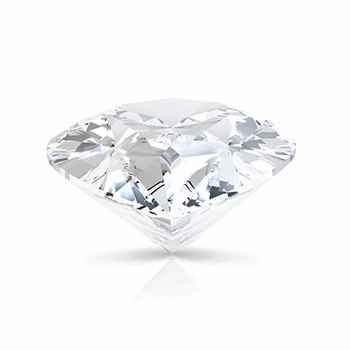
Pear Cut Diamond (Side View)
| Outline | Pear - rounded at one end with a point at the other |
|---|---|
| Cutting Style | Brilliant |
| Description | Sparkling, slender and graceful with a lengthening effect |
| No. of Facets | 57 |
| Ideal L/W Ratio | 1.5 |
DELICATELY DISTINCTIVE
Delicate, striking, and always impeccably presented, the pear shape cut is perhaps the most feminine of all the diamond shapes. A pear shape diamond is always stunning without being showy - a slender, sparkling teardrop that speaks volumes about the wearer’s exquisite taste.
The pear shape cut also offers remarkable flexibility and choice. It works just as well in a pendant or a pair of drop earrings as it does in an engagement ring. A pear shape diamond is beautiful whether it’s voluptuously wide, narrow and slender, or perfectly poised between the two. And you can choose to wear it with the tip facing up or down or even opt for a modern horizontal setting.
We Say
The pointed tip of a pear shape diamond can cause any trace of colour to be concentrated. Choosing a stone with a colour grade of H or higher will ensure your diamond looks crystal clear from base to tip.
TECHNICAL SPECIFICATIONS AND GRADING
Also known as a pendeloque or teardrop cut, the pear shape cut has a rounded end and a single point. In shape terms, it’s the subtle blending of a Round Brilliant and a Marquise.
Like other brilliant cuts, the pear shape has 57 facets. There may be between 4 and 8 pavilion main facets.
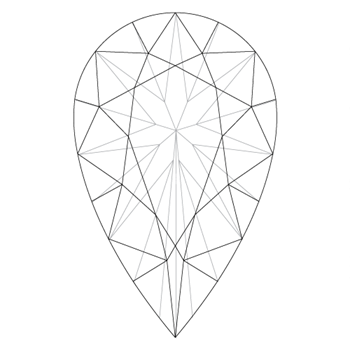
Pear Cut Diamond (Top View)
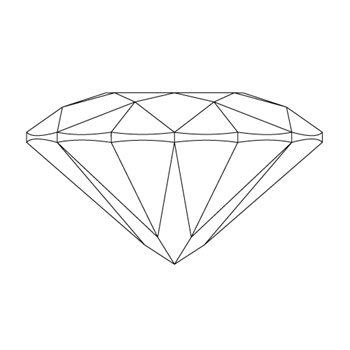
Pear Cut Diamond (Side View)
The typical length to width ratio of a pear shape cut is between 1.45 and 1.75, with 1.50 giving the most ‘traditional’ look.
The Bow-Tie Effect
Pear, marquise, oval and heart shape diamonds can suffer from a phenomenon known as the bow-tie effect. This is where an area of shadow resembling a bow tie can be seen in the centre of the stone.
Whilst it’s not unusual for some shadow to be visible in oval, pear, marquise and heart shape diamonds when viewed from a certain angle in a certain light, it’s undesirable for a diamond to have an obvious dark area when viewed from ANY angle in ALL lights. You should look for a stone with minimal shadow to detract from its beauty.
If you have any concerns about the bow-tie effect and would like to make an appointment to view diamonds at any of our showrooms, please contact us.
GRADING
Currently, there aren’t any universally accepted standards for grading the cut of Pear cut diamonds so certifying laboratories don’t do it. Instead, it’s down to individual retailers to evaluate the quality of the cut for this shapes.
We've developed our own criteria to provide consistent cut grading for all the Pear Cut diamonds we offer. These take into account factors such as table and depth percentage, polish and symmetry, and length to width ratio.
Refer to the table below to see how we grade Pear Cut diamonds.
| Excellent | Very Good | Good | Fair | Poor | |
| Table % | 55%-62% | 53%-64% | 52%-65% | 50%-70% | <50% or >70% |
| Depth % | 58%-64% | 57%-66%% | 56%-68% | 46%-71% | <46% or >71% |
| Polish / Symmetry | Good to Excellent | Fair to Excellent | Poor to Excellent | ||
| Ratio (L/W) | 1.45-1.55 | 1.40-1.60 | 1.35-1.65 | 1.30-1.70 | <1.30 or >1.70 |
BACKGROUND AND HISTORY
The Pear Shape Cut has been around almost as long as the cutting process itself. In 1475, a Flemish cutter by the name of Lodewyk van Berquem of Bruges invented a diamond-polishing wheel called a scaif. Using his invention, he was able to introduce the concept of absolute symmetry in the placement of facets, producing pendeloque or ‘briolette’ shaped diamonds (shorter, squatter versions of the pear shape).
Although Lodewyk van Berquem’s early designs were favoured by the Duke of Burgundy and referred to at the time as a ‘Perfect-Cut’, the pendeloque shape was not considered good enough for commercial sale due its poor light handling and lack of sparkle. However, it’s thanks to van Berquem’s revolutionary cutting techniques that we've got the beautiful stones we have today including the Millennium Star - a 203.04 carat, D-colour, internally and externally flawless pear-shape diamond.
STYLE GUIDE
A pear shape diamond is the perfect choice for those looking for something elegant and feminine. In an engagement ring, it graces the finger, and its gently sloping symmetry ensures a look that is both pretty and striking.
The elongated shape can help to make short fingers appear longer and also has a subtle slimming effect, especially in stones that have a length to width ratio higher than 1.50. Wear with the tip pointing towards the fingernails to enhance the appearance of length or point it towards the wrist to balance fingers that are already long and slender.
Length to Width Ratio
Although a length to width ratio of 1.50 is considered traditional, with the pear shape cut beauty is most definitely in the eye of the beholder - it can change its appearance from full and rounded to long and slender without dropping an ounce of brilliance. For a diamond with a wider form look for a length to width ratio of 1.45 or lower and for a slimmer shape aim for 1.75 or even 2.0.
Setting
Pear shape diamonds require a special setting to protect the fragile tip and prevent it from chipping. This is usually a three-claw setting, although five and six claw settings are also common.
-
Ethically Sourced Diamonds
-
Handmade in the UK
-
FREE Shipping Worldwide
-
60 Day Returns

